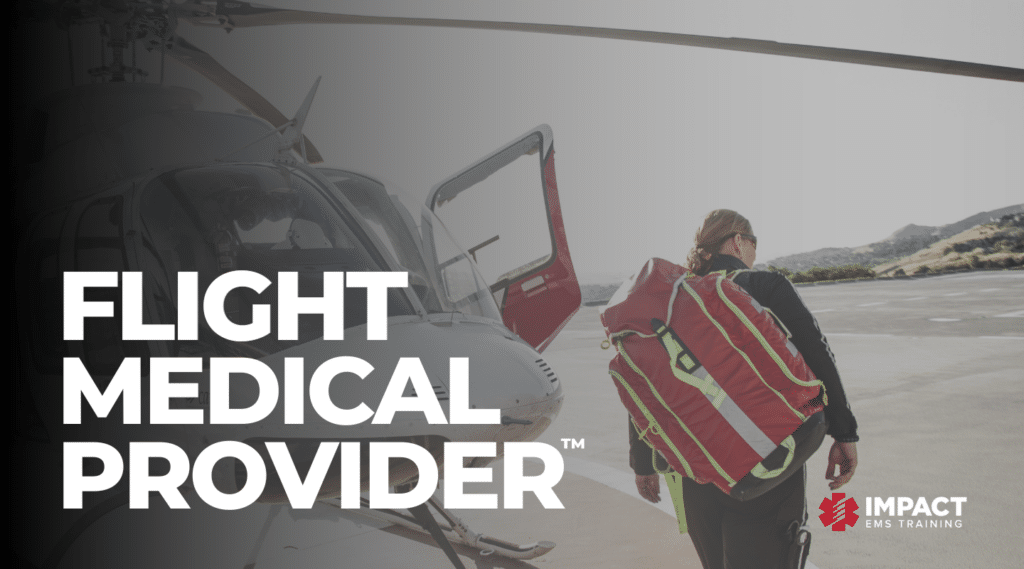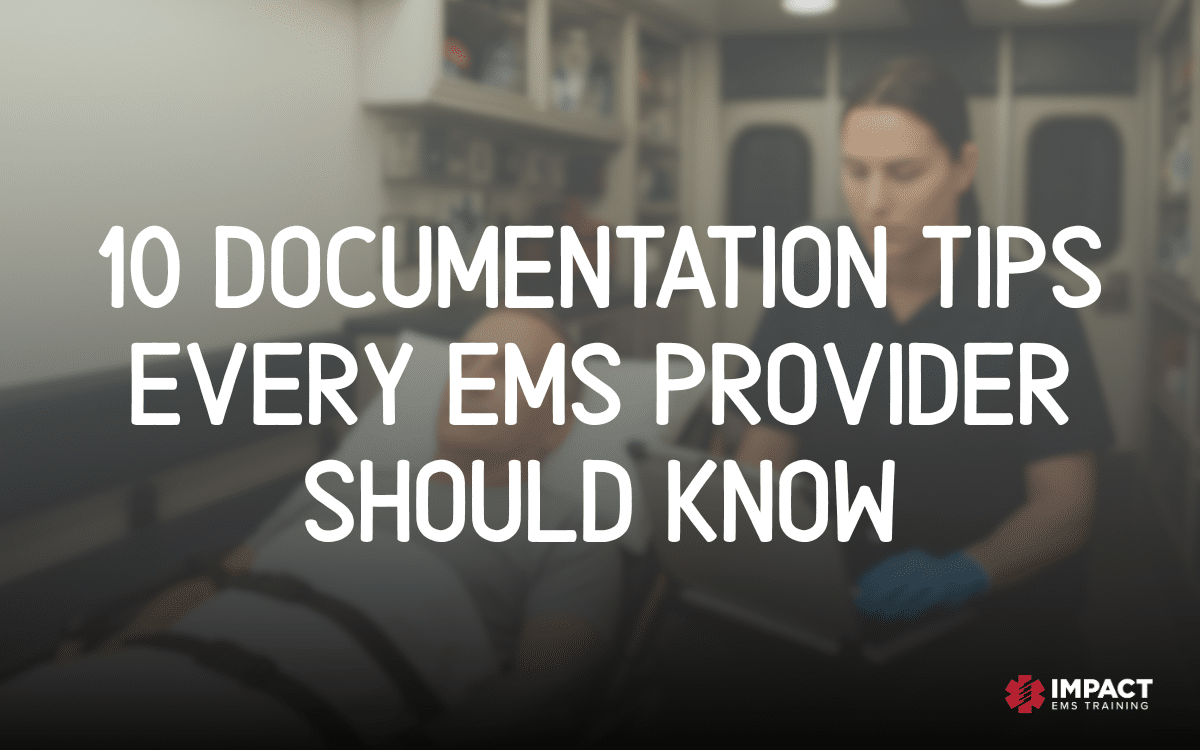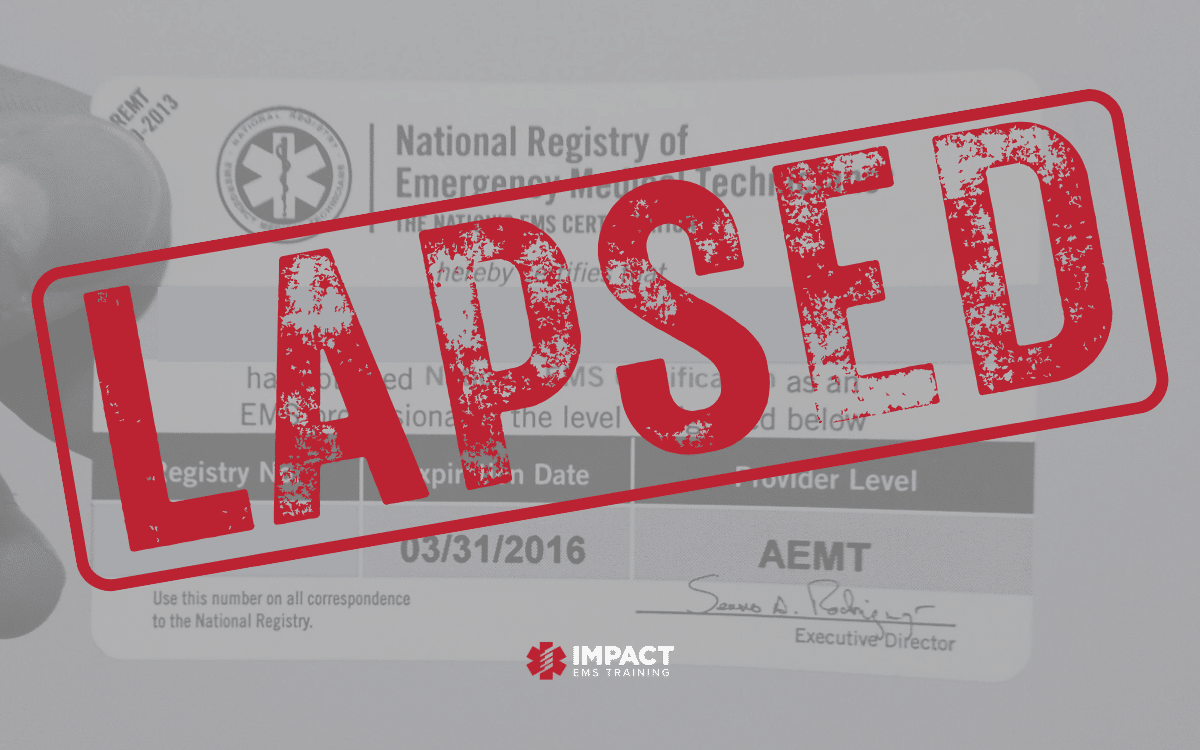Table of Contents
Welcome to Your Future in Flight Medicine
Welcome to IA MED’s Ultimate Guide on “How to Become a Flight Paramedic.” See our Flight Paramedic Certification to get started.
This course is a roadmap that demystifies the journey to becoming a flight paramedic and is designed to help you achieve your career goals.
At the end of this course, you will be able to:
-
Describe the role of a flight paramedic
-
Differentiate between working as a flight paramedic and passing the Certified Flight Paramedic (FP-C) Examination
-
List the general application requirements for flight paramedic jobs
-
Identify professional and educational opportunities to best prepare yourself for the application process
-
Describe the application process
-
List the purpose of each component of the application
-
Prepare a competitive cover letter
-
Prepare a competitive resume
-
Describe the different types of interviews during the hiring process
-
Demonstrate traits of an ideal candidate to hiring managers during interviews
-
List common orientation and training experiences
-
List the ongoing state requirements of a flight paramedic
-
List long-term career opportunities of a flight paramedic
A Note of Importance: Every position and company is different, so you may find some variations during your own journey. Let us know what we missed!
As always, the team at ImpactEMS is here to help you achieve your professional dreams, so don’t hesitate to reach out! Let’s get started.
What is a Flight Paramedic?
Objectives
-
Describe the role of a flight paramedic
-
Differentiate between working as a flight paramedic and passing the Certified Flight Paramedic (FP-C) Examination
Defining the Job of Flight Paramedics
So you want to be a flight paramedic. What does that actually mean? If you’re reading this, then you probably have some idea of what the job is. However, let’s make sure to define it for the record. Although Wikipedia is not always the most reliable academic source, it provides us with a brief and useful definition.
A flight paramedic is a highly trained paramedic that provides care to sick and injured patients in an aeromedical environment on either fixed or rotor wing aircraft.
Let’s simplify this even further: “A flight paramedic is a paramedic that uses an airplane or helicopter for transport.”
Although simple, this definition doesn’t include many of the nuances and variations between employers and jobs.
Not All Jobs Are the Same
Chances are you’ve seen different depictions of flight paramedics. You may have encountered them in your day-to-day life, while watching a piece of local news or Dwayne “The Rock” Johnson in San Andreas. (So cool, right!?!?)
A quick google search for the term ‘flight paramedic’ returns thousands of different images. While scrolling through the images, you may realize that some of the jobs and medics look very different than others. You may be asking yourself, “If these are all flight paramedics, why do they look so different?” and that is an excellent question.
As a flight paramedic, no two days are the same, and no two jobs are the same. There is always variation in the aeromedical field. You may hold the title of “flight paramedic,” but what you do on shift depends heavily on the type of service (i.e., employer) that you work for.
Here are some examples of different types of services:
Hospital-Based
Hospital-based services are one part of a larger, extensive organization, such as a medical center or hospital. These facilities establish and maintain their own, in-house air medical programs that are an extension of their services. In some cases, employees may even work inside the hospital while not responding to calls!
Municipal Agency
A city, town, county, or state may identify the need for an air medical program in their region. In these cases, they will stand up an agency, similar to a fire department, to fit the needs of their population.
Private Service
Business is business. There are NUMEROUS private, for-profit services across the nation, including some of the largest air medical providers in the world. These organizations may augment municipal agencies through contracts for various regions or compete with other organizations for patient care.
Regardless of the type of organization you work for, you may be involved in one or more of the following types of calls for service.
911 Scene Responses
In these situations, on-scene first responders call for an aircraft to transport a patient from the scene of an incident. This may be a bad car accident, fire, or even just a really sick medical case. Either way, somebody has decided this patient needs to get to the hospital and FAST.
Interfacility Transports (IFT)
In some situations, a critically ill or injured patient may need to be transferred from one facility to another for a specific procedure or treatment that is not available in their current facility. This is generally referred to as a need for a ‘higher level of care.’
Transfers often include:
-
ER to ER
-
ER to ICU
-
ICU to ICU
-
Any other of movement between hospitals
Search & Rescue
The combination of flight and advanced medical training makes flight paramedics a prime candidate for search and rescue operations. While working in this capacity, you may be searching expansive areas for lost patients. Some services also utilize hoist and rope rescue techniques to extract patients from hard-to-reach locations.
Specialty Care
Some cases just need that extra touch. These crews focus on special subsets of medical care. These types of calls are commonly seen for pediatrics and neonates, but other examples include ECMO and international repatriation.
As you can see, there are plenty of opportunities to work as a flight paramedic! Also, this is by NO means an all-inclusive list.
Why Should I Become a Flight Paramedic?
There is a 500% “cool” factor associated with being a flight paramedic, but what else does it offer? Why do people make a career as a flight paramedic? We asked that exact question to members of our team, and here are some of their responses.
Maximum impact. Minimal time. – Jessica Peltz, ImpactEMS
“In EMT school, we had a day where the flight crews came in and spoke to our class. I was incredibly impressed by the medics and how they carried themselves. I knew right then that was something I wanted to do. – Justin Krantz, Trans Aero MedEvac
“Flight is a way in which I can learn to and actually take better care of my patients at a higher level. The expanded scope and training allows me to do more for them when I respond.” Cameron Cheek, Franklin County EMS
“To provide care to the sickest patients in some of the most challenging environments. This field allows me to practice to the full extent of my scope while working to advance medicine to the most progressive evidence we have.” – Jeremy Singleton, ImpactEMS
Key Takeaway: A job as a flight paramedic can be extremely rewarding if you like making a difference and leading the field of paramedicine.
What is the Flight Paramedic Exam (FP-C)? Flight Paramedic Certification
If you’ve been thinking about becoming a flight paramedic, chances are you’ve seen the letters ‘FP-C.’ What do they mean? The term regularly causes confusion, so let’s clear this up.
The FP-C is a certificate that has become an international benchmark for validating the knowledge required to be a flight paramedic. It is achieved by passing an exam that is administered by the International Board of Specialty Certifications (IBSC), formerly the Board for Critical Care Transport Paramedic Certification (BCCTPC).
The IBSC is a non-profit organization that creates and administers a wide variety of written tests. In this way is is very similar to the National Registry of EMTs (NREMT), but it differs by not requiring psychomotor skill exams.
On their website, the IBSC specifically explains what the FP-C is and what is not:
“The questions on the examination are designed to measure this specialty area of paramedicine, not entry-level knowledge of the paramedic. The candidate is expected to have mastery of the knowledge of current critical care transport medicine standards and the experienced paramedic’s skills and knowledge.”
By taking and passing the FP-C exam, you earn the FP-C certificate and demonstrate your knowledge, but that is different than actually working as a flight paramedic. In most cases, the FP-C certification is a requirement to work as a flight paramedic once hired.
In the next section, we’ll do a deep dive into what it takes to get hired.
Where Do I Sign Up? The Flight Paramedic Application Process
Objectives
-
Describe the application process
-
List the general application requirements for flight paramedic employment positions
-
Identify professional and educational opportunities to best prepare yourself for the application process
-
List the purpose of each component of the application
-
Prepare a competitive cover letter
-
Prepare a competitive resume
Job Openings
Flight paramedic jobs are found just like any other job on the internet. A quick search of online job boards will yield numerous results for flight paramedic positions across the nation. You can also find job openings by following the social media accounts of programs you’re interested or joining online groups, such as ImpactEMS’s Facebook Medical Education page. Just make sure to keep your ear to the ground and be prepared to apply because the positions fill up quickly!
Do You Have What It Takes To Be a Certified Flight Paramedic?
Like a pharmacist, holistic nutritionist, or any other specialist, flight paramedic positions have requirements that must be satisfied prior to even applying. Fortunately for you, most agencies share the same requirements. That being said, please remember it is not possible for us to cover every instance, and always check with the programs that interest you.
Most flight paramedic positions require the following minimum qualifications:
- 3-5 years of ALS experience as a paramedic in a high volume service
- Basic Life Support (BLS) certification
- Pediatric Advanced Life Support (PALS) certification
- Advanced Cardiac Life Support (ACLS) certification
- Prehospital Trauma Life Support (PHTLS) certification
- Neonatal Resuscitation Program (NRP) certification
Our goal is to provide you this list to serve as a starting point for your journey and give you a direction to work towards.
Who wants to just meet the minimum standard? Definitely not you, if you want to become a flight paramedic and some agencies may expect much more!
Let’s explore some ways you can improve on these minimum requirements and make yourself a standout applicant.
Go The Extra Mile: Experience and Education
Any astute applicant will take extra steps to shine when compared to other applicants. Here are some tips you can use to get noticed!
-
Clean Up Your Social Media – In 2021, it is commonplace for agencies to review your social media profile. Always consider the impact of your online persona on your career. Don’t let your online presence rob you of your professional dreams.
-
Obtain Additional Education – Hiring managers like to see self-motivated applicants that always trying to develop themselves. How can you demonstrate this through your application? Education! Strive for additional certifications and educational experiences beyond just the minimum requirements. Take it a step further and become an instructor! This experience will demonstrate to your agency that you are committed to improving yourself.
-
Diversify Your On-the-Job Experience – For any opening, there are probably a million “911” applicants. If you can acquire some experience in a medical specialty prior to applying, you will really stick out. Examples include ground critical care, NICU, ECMO, and anything else that exposes you to a more diverse range of patient populations.
-
Get Your FP-C…NOW! – Here’s the honest truth: most job openings are going to say the FP-C is “preferred, but not required.” This is BS. Chances are you will be competing with a number of other applicants that already have the FP-C. The advantages to obtaining the FP-C before applying are two-fold 1) the FP-C makes you immensely more competitive and attractive to agencies because they know you have the mental capacity and 2) it sets you up for success during your orientation training if you get hired by reducing your stress (i.e., you will already be familiar with most of the material). Luckily we know someone that helps thousands of students pass the exam every year (checkout: FMP Course).
At the end of the day, it is all about making yourself stand out so that you can get to the next stage.
Checking the Boxes: Application Basics
Applying for a flight medic job begins with the online application and it is very straightforward. You will fill out some basic demographic information, contact information, and upload a resume and potentially a cover letter (more on that below). You’ll also have to also manually input your work history (we know, it’s on the resume already, but that’s a part of it). Many places will ask for professional and personal references as well. At the end of the day, the information on your application may vary based on where you’re applying, so be prepared to answer any and all questions from the employer.
The Written Word: Resumes and Cover Letters
To be frank, we provide medical education, not professional writing courses, so we’re going to share some resources on writing an effective resume and cover letter from people who know a LOT more than us. What we can say, is that we hire flight paramedics instructors every year and we see a lot resumes and cover letters. NEVER underestimate the importance of both documents. You have to remember that this is the hiring team’s first impression of you. Make sure to put your best foot forward by investing some serious time into this step – it will pay off.
UC Berkeley – Resume and Cover Letter Writing
LinkedIn – The Only Cover Letter Guide You’ll Need in 2020
Passing the First Hurdle: Getting the Call
You’ve done everything right. You made the decision and pulled the trigger by applying. Your phone rings and the caller ID shows your dream job’s name on the line. You’ve been selected to move forward in the process. Congratulations! Next up is the interview…now let’s talk about how to get that second call.
The Gift of Gab: How to Ace Your Flight Paramedic Interview
Objectives
-
Describe the different types of interviews during the hiring process.
-
Demonstrate traits of an ideal candidate to hiring managers during interviews.
Your Experience May Vary
As we’ve said throughout this course, there is more variation within the air medical industry than there is Baskin Robbins ice cream flavors. While we can’t prepare you for YOUR specific interview, we can prepare you for what you MAY see.
Interview phases may be broken down into three parts. You may have more or less, depending on the agency.
Oral Interviews
You’re going to sit down and talk to somebody, at the very least. You may interview with 1 or 2 people, or it may be a board of 9-10. The hiring will likely consist of a human resources manager (non-medical), a supervisor, a clinician, and possibly the medical director. This is ENTIRELY dependent on the agency. You can expect pretty standard questions. “Tell us about yourself.” “Why do you want the job?” “Elaborate on your experience for us.” Essentially, this phase serves as a time for the hiring team to see the person behind the paper and gauge your character. They will probably be trying to get a feel for who you are as a person and how you may fit in on their team. Working well together is essential in the high-stakes world of flight medicine!
Knowledge Exams
In some cases, agencies may want to ensure your baseline knowledge. This may be conducted verbally or via paper exam. For the most part, the agency is just trying to identify your starting point for training. By doing so, agencies can assure you are at the level they need for you to begin training and learn more. Feel free to ask for resources! Agencies may have an outline of what they expect you to know so you can brush up ahead of time.
Scenarios/Skills Testing
Asking questions is great, but nothing measures competency quite like doing the job. Some agencies may test your clinical skills by having you run through scenarios and skills testing. In the lowest form, these could be questions such as, “How would you manage this patient?” On the other end of the spectrum, you may have a high-fidelity simulation to really test your limits. Not all scenarios are clinical, interpersonal relationships are essential in flight medicine, so you may be questioned or given situations that test communication or conflict resolution.
What Are Companies Looking for in an Applicant?
This may be one of the biggest questions new applicants ask. Conversely, it is also the hardest one to answer. There is no “silver bullet” for getting hired – every program has different dynamics and standards. That being said, after speaking with hiring teams across the industry, here are a few tips and tricks.
Be self-starting and motivated. Showing that you take initiative goes a long way and is a big plus,
Always, always, ALWAYS be open to learning and improvement. At the end of the day, any clinical shortcomings can be addressed through education and training. It is up to you to be open to those changes.
If you don’t know the answer to something, say so. “I do not know the answer to that at this time, but I would find out by xyz.” This shows humility and self-awareness. After the interview, look it up and the provide the answer after the interview!
Following those same footsteps, it is important that you display a positive attitude. This is another thing which can’t be “out-trained”.
The bottom line is that the company wants to see that you’re a ‘good fit’ for their culture and that you are able and willing to learn.
Getting Called up from the Minor League: You’re Hired
Sorry for the sports analogy, but it’s true. Moving up to flight medicine is a major shift.
If you’ve done everything right and successfully put your best foot forward, the ball is now in the agency’s court, so (try to) take a load off. Undoubtedly, the time spent awaiting results can be a little nerve-wracking, so do your best to relax and wait until you see that caller ID pop up again.
You Got the Job! Now what?
Objectives
-
List common orientation and training experiences.
-
List the ongoing requirements of a flight paramedic.
-
List long-term career opportunities of a flight paramedic.
The New Kid on the Block
First off, congratulations! You have now started what we believe to be one of the best career paths in the prehospital environment. Give yourself a pat on the back, but don’t think it’s over yet. You got your foot in the door but now you’re the “new person”. Time to make like a sponge and soak it up. Chances are you will undergo some form of orientation, followed by a ‘probation’ with an FTO. Let’s break these down.
Orientation
You just started a new job! Starting as flight paramedic is no different than anywhere other job, and you need to learn the administrative functions of the company. During this time you will receive all of that ‘stimulating’ initial onboarding education about HR, finances, policies, and procedures, etc. It’s safe to also expect a thorough introduction to how your agency operates clinically. Programs will vary in length, but orientation is laying the groundwork for what comes next.
Probation
This is another time when your experience may vary. Rest assured, you will undergo a period of time where you are working in the field and also be receiving training and evaluation. On-the-job training, if you will. This is the time for you to learn and ask questions. It may seem a little overwhelming at first, but you’ve come this far! Hang in there! It will be over with before you know it.
Keep it Up!
FP-C Recertification. The word alone tends to illicit a shudder or groan from providers. Flight paramedics are no different. In this instance, we are strictly referencing the FP-C. Some agencies will provide you with recertification resources in the form of courses, guidance, or more. Make sure to take advantage of all that is available to you. Should you need to handle it yourself, here are the requirements to recertify your FP-C, straight from the IBSC website.
- Maintain current FP-C certification (i.e. don’t let it lapse!)
- Maintain current, unrestricted paramedic license in the state or country of practice
- Any restriction(s) must be reported to the IBSC
- Complete and submit 100 approved continuing education (CE) credits
- Pay the required recertification fees
Complete recertification information can be found by visiting https://www.ibscertifications.org/recert/fpce
Where Do I Go From Here?
Chances are if you found yourself in this field, then you’re a go-getter. You will probably start to wonder what comes next and where can you go from here. Fortunately, there are still plenty of options!
-
Management – Do you like taking leadership and helping others? Pursue management in your company! You have a chance to make a difference in the career of others and the trajectory of your organization.
-
Education – Passion for teaching? The field always needs high-quality instructors. Work with others to foster the next generation of providers.
-
Quality Improvement – This may go hand in hand with education in some programs, or it may be its own section. Either way, this is ensuring your program’s goals and metrics are being met.
Here’s the deal, the world is your oyster. No matter where you go from here, having time in flight on your resume will help you in any of your future endeavors.
Wrapping Up, Becoming a Flight Paramedic
There we have it! Now, once again, let me reiterate: we just took a birds-eye view from 10,000′ above the ground (pop quiz: what physiologic zone is that?). This is a global perspective on what we have seen in our time helping and working within the industry. Be flexible and understand that no two experiences are the same. Either way, we’re here to help! If you have questions or just need some advice, give us a shout at support@iamed.com.
Did you find this article helpful? Let us know and tell a friend! Lastly, make sure to check us out for your training needs as you pursue your goals, ImpactEMS.com.
Till then, wishing you blue skies and tailwinds.
Sincerely, The ImpactEMS Team




